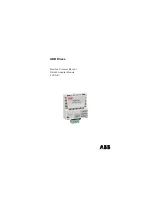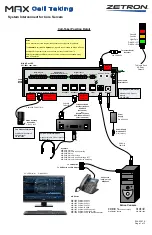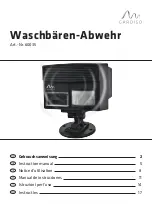
Appendix A:
Control Logic Programming
You can use the CB6000 to its full potential by learning to program your own configuration files. Each CB6000 includes a
utility for creating, modifying, loading, and/or saving the configuration file. We strongly recommend that you use the fol-
lowing workflow for any custom programming:
1. Create Macros (covered in Appendix A.2) — Variables that refer to specific IP-addressable devices
2. Create Actions (covered in Appendix A.3) — Specific control commands for specific devices
3. Create Events (covered in Appendix A.4) — The kinds of situations in which you want to initiate one or more Actions
4. Create Pages (covered in Appendix B) — Logical groupings of buttons (e.g., DVD transport controls)
5. Create Buttons (covered in Appendix B) — Buttons that represent specific Events (e.g., mute)
6. Set Preferences (covered in Appendix C) — Set other parameters (e.g., timeout, security)
You can certainly deviate from this workflow, but you will probably waste some time flipping back and forth between
programming screens unnecessarily.
7. Connect to the CB6000 through A Web Browser
On a computer connected to the LAN, type in the IP address of your CB6000 — the default is 192.168.1.104 If you
have not already reassigned it (see Step 3 for guidance).
8. Define Macros
Defining Macros makes mass deployment of CB6000s easier by letting you define Actions using variables to repre-
sent the IP addresses of the devices you’ll control. This means that your configuration file can be written as a tem-
plate, with IP addresses explicitly defined in only one place (the Macro Definitions) rather than repeated throughout
your Actions. This saves a tremendous amount of labor as you re-use the configuration file to control new devices
from room to room.
•
Choose
Macro Definitions
•
Enter up to 16 macro names and values in the following format:
•
Macro Name
: Any name can be used, but it is most useful if this is an easily recognizable, generic, and
concise name for a device type used throughout your installation (e.g., ICR-01, Projector, etc.)
•
Macro Value Field
: The value of this variable for this particular installation. For NET commands (see
Appendix A.3) this takes the format:
I
ipaddress
,P
port
(e.g., I192.168.1.201,P7262)
For HTP commands (see Appendix A.3) this simply takes the format:
ipaddress
(e.g., 192.168.1.201)
•
Click
Save Macros
.
The Macro definitions are included as part of the saved configuration file. When you use this configuration file as a
template in similar installations, simply change the value of each defined Macro to the appropriate IP address. For
example, in subsequent rooms, we may set the value of ‘ICR-01’ to I192.168.1.202,P7262; I192.168.1.203,P7262; and
so on.
17
Summary of Contents for CB6000
Page 1: ...CB6000 Installer Guide ...















































